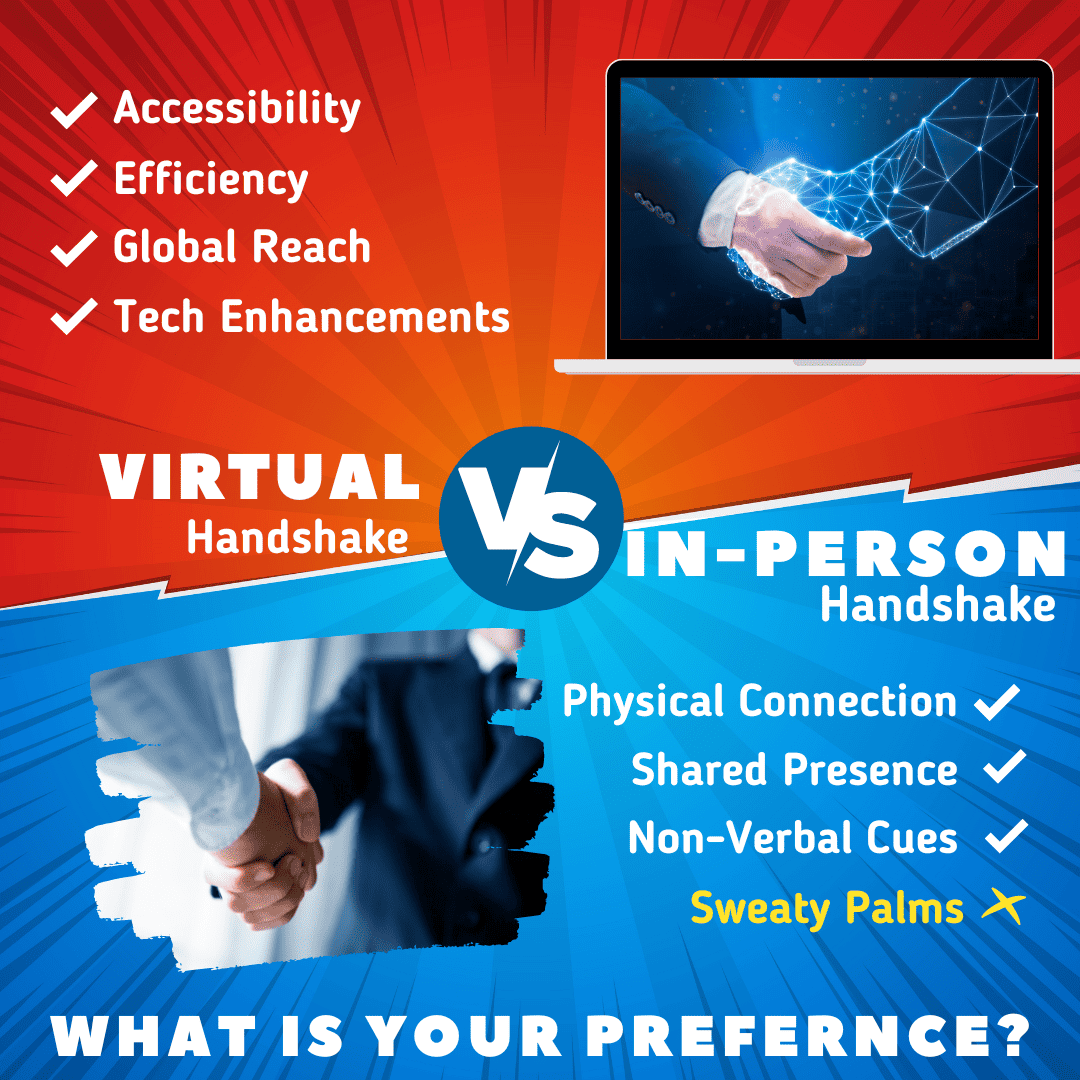Virtual Handshake vs. In-Person Handshake: Are they equal?
In a world that is becoming increasingly connected through digital platforms, traditional face-to-face interactions are being replaced by virtual encounters. This shift has raised questions about the effectiveness of virtual interactions compared to their in-person counterparts, and one of the key points of discussion is the handshake. The handshake has long been considered a symbol of trust, respect, and connection. But can an online “handshake” truly be as effective as an in-person one? Let’s delve into this intriguing debate.
The Power of the In-Person Handshake
There is something undeniably powerful about the act of shaking someone’s hand in person. It establishes a physical connection, creates a moment of shared presence, and can convey a wide range of nonverbal cues. The strength, firmness, and warmth of a handshake can leave a lasting impression, build rapport, and communicate sincerity.
The in-person handshake allows for a direct exchange of energy, enabling individuals to gauge each other’s character, confidence, and trustworthiness. It provides an opportunity to establish a personal connection and fosters a sense of camaraderie. In business settings, it often seals deals and forms the basis for successful partnerships.
The Rise of the Virtual Handshake
In recent times, the virtual handshake has gained prominence due to the rise of remote work, virtual meetings, and digital networking. Platforms like video conferencing, email, and social media have attempted to bridge the physical gap and replicate the act of shaking hands through virtual means.
While lacking the physical touch, the virtual handshake can still be effective in its own right. Through video calls, individuals can see each other’s faces, expressions, and body language, allowing for a level of personal connection. Online introductions, email exchanges, and social media interactions can also convey sincerity, respect, and professionalism.
Advantages of the Virtual Handshake
- Accessibility: The virtual handshake eliminates geographical limitations, making it possible to connect with people from all over the world. This accessibility broadens networking opportunities and opens doors to collaborations that might not have been possible otherwise.
- Efficiency: Virtual handshakes save time and resources by eliminating the need for travel, reducing carbon footprints, and increasing productivity. Quick online introductions and virtual meetings allow for efficient communication and decision-making.
- Global Reach: Digital platforms enable individuals to connect with diverse cultures, languages, and perspectives. This exposure enhances global awareness, fosters inclusivity, and encourages cross-cultural collaborations.
- Technological Enhancements: With advancements in technology, virtual handshakes can simulate physical sensations through haptic feedback, creating a more immersive experience. Additionally, virtual reality (VR) and augmented reality (AR) technologies hold the potential to bridge the sensory gap between the virtual and physical realms.
The Limitations of the Virtual Handshake
- Physical Connection: The absence of physical touch in virtual handshakes can make it challenging to establish a deep sense of trust and connection. Touch conveys warmth and can evoke emotional responses that are difficult to replicate online.
- Nonverbal Communication: While video calls provide visual cues, they may not capture all the nuances of body language that are easily noticed in person. Subtle gestures, facial expressions, and even eye contact can be lost or misinterpreted in the virtual realm.
- Lack of Spontaneity: The virtual handshake can feel scripted and artificial compared to the organic nature of an in-person interaction. It can be challenging to replicate the informal moments of connection and spontaneity that often occur during face-to-face encounters.
- Cultural Differences: Different cultures have varying norms and expectations regarding greetings and personal space. Without a shared physical context, it can be challenging to navigate these
So, what are your thoughts on this?

